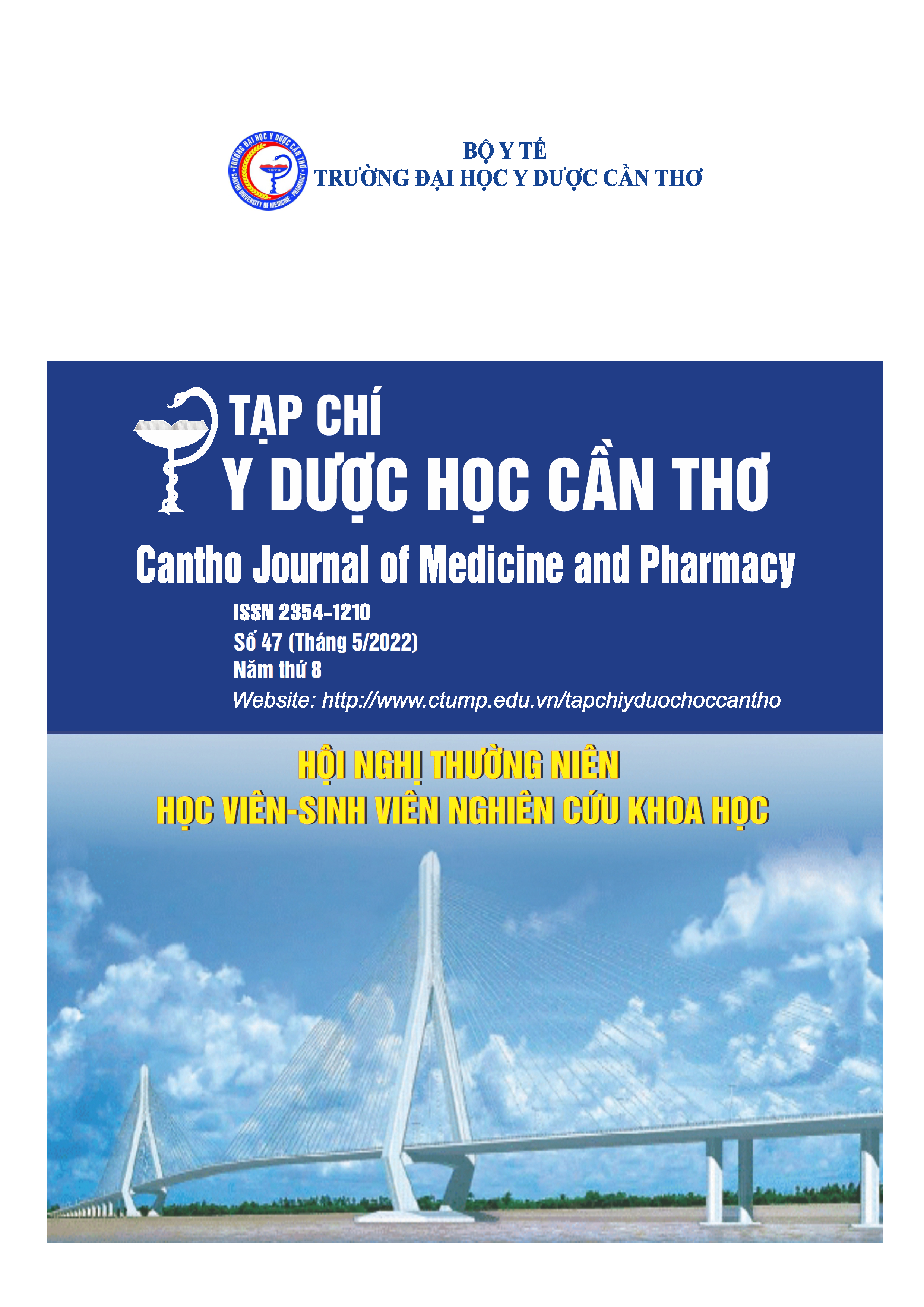Clinical features and the outcomes evaluation of hypertrophic scar treatment with triamcinolone injection at Can Tho University of Medicine and Pharmacy Hospital
Main Article Content
Abstract
Background: Excessive scarring has both cosmetic and psychological repercussions. Intra- scar injection, for example, makes a significant contribution to enhancing treatment efficiency.
Objectives: To describe the morphological features, categorize, and assessing the effects of Triamcinolone injection therapy of hypertrophic scars. Materials and methods: A cross-sectional descriptive study of 80 patients with hypertrophic scars treated with triamcinolone intralesional injection at Can Tho University of Medicine and Pharmacy Hospital from 5/2018 to 5/2021. Results: There were 80 patients in all, with a male/female ratio of 1/1.05 and a median age of 15-35. There were 129 scars in all, with scar age >1 year accounting for 83%, keloid scars accounting for 64%, and hypertrophic scars accounting for the remaining 36 percent. Scars are most commonly seen on the trunk, accounting for 53.5 percent of all scars, particularly on the anterior chest wall. When the source of scars was discovered, trauma and acne accounted for 24% and 23%, respectively, while the rest were predominantly spontaneous scars, accounting for 49%. Scarring and discomfort of mild to moderate severity were common clinical symptoms; scars larger than 5cm in size had more symptoms than scars smaller than 5cm. Prior to the therapy, the mean Vancouver Score Scale-VSS was 6.55±2.13. After 24 weeks of the therapy, 96.7% of patients had entirely improved itching symptoms, 75% had completely improved pain, and 25% still had minimal pain. After therapy, the mean Vancouver Score Scale-VSS was 2.55±1.81 (p<0.05). At week 24, 3.75% of patients experienced skin shrinkage, 3.75% experienced depigmentation, and 13.75% experienced vasodilation. Conclusion: Triamcinolone intralesional injection should be utilized as a first-line therapy for hypertrophic scarring.
Article Details
Keywords
Clinical features, hypertrophic scar, Triamcinolone intralesional injection
References
2. Đinh Hữu Nghị (2009), Đánh giá hiệu quả điều trị sẹo lồi bằng tiêm Triamcinolon acetonid trong tổn thương, Luận văn Bác sĩ nội trú, Đại học Y Hà Nội.
3. Abedini R., Sasani P., Mahmoudi H. R., et al. (2018), Comparison of intralesional verapamil versus intralesional corticosteroids in treatment of keloids and hypertrophic scars: a randomized controlled trial, Burns, 44(6), pp.1482-1488.
4. Aggarwal A., Ravikumar B. C., Vinay K. N., et al. (2018), A comparative study of various modalities in the treatment of keloids, International Journal of Dermatology, 57(10), pp.1192-1200.
5. Andrews J. P., Marttala J., Macarak E., et al. (2016), Keloids: The paradigm of skin fibrosis— Pathomechanisms and treatment, Matrix Biology, 51, pp.37-46.
6. Belie O., Ugburo A., and Mofikoya B. (2019), Demographic and clinical characteristics of keloids in an urban center in Sub-Sahara Africa, Nigerian Journal of Clinical Practice, 22(8), pp.1049.
7. Berman B., Maderal A., and Raphael B. (2017), Keloids and hypertrophic scars: pathophysiology, classification, and treatment, Dermatologic Surgery, 43, pp.S3-S18.
8. Chapman M. S. (2017), Keloids and Hypertrophic Scars, in Habif, Thomas P., et al., Editors, Skin Disease: Diagnosis and Treatment Fourth Edition, Elsevier, pp.432-434.
9. Coppola M. M., Salzillo R., Segreto F., et al. (2018), Triamcinolone acetonide intralesional injection for the treatment of keloid scars: patient selection and perspectives, Clinical, Cosmetic and Investigational Dermatology, 11, pp.387.
10. Garg A. M., Shah Y. M., Garg A., et al. (2018), The efficacy of intralesional triamcinolone acetonide (20mg/ml) in the treatment of keloid, International Surgery Journal, 5(3), pp.868-872.
11. Hewedy E.-S. S., Sabaa B. E.-S. I., Mohamed W. S., et al. (2020), Combined intralesional triamcinolone acetonide and platelet rich plasma versus intralesional triamcinolone acetonide alone in treatment of keloids, Journal of Dermatological Treatment, pp.1-7.
12. Lee H. J. and Jang Y. J. (2018), Recent understandings of biology, prophylaxis and treatment strategies for hypertrophic scars and keloids, International Journal of Molecular Sciences, 19(3), pp.711. 13. Song H., Tan J., Fu Q., et al. (2019), Comparative efficacy of intralesional triamcinolone acetonide injection during early and static stage of pathological scarring, Journal of Cosmetic Dermatology, 18(3), pp.874-878.
14. Srivastava S., Kumari H., and Singh A. (2019), Comparison of fractional CO2 laser, verapamil, and triamcinolone for the treatment of keloid, Advances in wound care, 8(1), pp.7-13.


